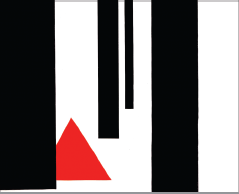2 Making sense of pictures
‘A picture tells a thousand words’, or so the saying goes. But how does this happen? Perhaps to an even greater degree than we do with words, we make sense of images by drawing on existing knowledge and experience. As discussed in the introductory video, images become particularly important in the context of books for children. As anyone who has watched a small child ‘reading’ a picture book will know, young children are able to derive a great deal of meaning and pleasure from the activity, even when they cannot yet decode the letters and words. They are able to make connections between the pictures and the words of the story, which have become familiar when read aloud to them by adults and older children. These connections play an important role in helping children learn to read. They are also able to draw on their expanding knowledge of other stories, and of life in their culture more generally, to make sense of pictures that they’ve never seen before.
Activity 2
Consider the illustration below (Figure 2). Can you name the fairy tale it is depicting? How did you arrive at your answer?
Discussion
The illustration represents the story of Little Red Riding Hood (although other interpretations are certainly possible, such as Hansel and Gretel). You may have made some of the following observations:
- The small red triangle stands out because of its colour and positioning, even though it is smaller than the black lines surrounding it. A hood or cape may take a similar triangular shape; so, aided by the colour red, we can make the link to Red Riding Hood using our background cultural knowledge.
- The strong black vertical lines have an air of permanence and stability, as do trees. Their position, number and different sizing may well suggest a ‘forest’ to you, even though the illustration is actually just an arrangement of two-dimensional geometric shapes. The location of the red triangle amongst ‘trees’ strengthens the link with the fairy tale, if we know the story about Red Riding Hood walking to her grandmother’s house through the wood.
- If the black lines can be interpreted as ‘trees’, it might be possible to see the red triangle as ‘hiding behind a tree’. If we see it this way, it may look small, wary, vulnerable. Again, we can interpret this image in the light of our knowledge of the story, but also in the light of broader cultural associations (in European contexts at least) of woods and forests as potentially dangerous and scary places to be alone.
Molly Bang is an American illustrator and a teacher of illustration. In the book from which this image comes, she shows how a fairy tale can be constructed visually using a series of shapes (Bang, 2000).

She starts with a simple red triangle, and adds ‘trees’ (Figure 2). As the scene progresses, Bang resizes Little Red Riding Hood to make her smaller, places her further from the foreground to emphasise her vulnerability, and tilts a ‘tree’ onto the diagonal to add a sense of threat. Starting with three black triangles, she begins to make the wolf (Figure 3 A). Finally, she darkens the background to portray a more threatening sense of darkness and night-time, and adds more geometric shapes to develop the wolf further (Figure 3 B).
What Bang does in this series of illustrations is bring to the fore much of the background knowledge we already have, making this explicit by showing at once the surface simplicity and the deeper complexity of the knowledge that we need in order to read, see and understand picturebooks. In the next section, we will look at the various ways in which texts produce meaning when words and images are combined.


